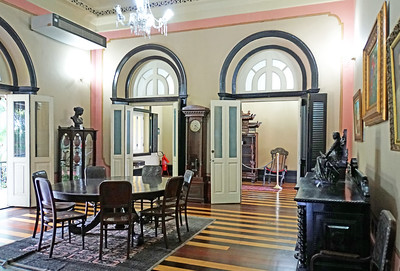Yesterday, I wrote about the drivers of the cost of a college education. The cost of attendance has risen by nearly 250% over the past three decades, and not all of the increase is attributable to inflation. One of the primary drivers in student cost increases is campus construction.
Every state funds its higher education construction projects differently. In Michigan, the state will pay up to 75% of campus construction costs for a qualifying building at a public university. The state will pay up to 50% of the construction costs for a qualifying building on the campus of a public community college.
Each year, the state prioritizes construction requests from the various colleges and universities. Part of that process is determining the percentage of a project that qualifies for state funding.
Either WCC happens to be very bad at proposing projects that qualify for state funding, or the administration and Trustees simply don’t care. There are certain campus construction projects that the State won’t pay for. A building has to have academic value or directly serve student needs to qualify for funding. The farther off the mark a building is, the less money it gets. So, buildings like the Morris Lawrence Building and the Health and Fitness Center don’t get state funding at all.
WCC campus construction doesn’t qualify for state funds
A building like the TI Building would qualify for the full 50%, provided that the building didn’t suffer from undone maintenance. That’s the other big thing the State won’t pay for. If a community college wants to (or has to) remediate neglect during a capital project, the State will not fund any portion of the neglect work. So, for example, if the State determines that neglect accounts for 20% of a project’s cost, the State will deduct that 20% from the project’s eligible expenses. The community college has to pay the full 20% of the neglect cost in addition to half of the project cost and any non-qualifying construction.
In the case of the Morris Lawrence rehab, WCC estimated that 90% of the cost of the project was to remediate undone/neglected maintenance. Right off the top, 90% of the project costs would not have qualified for money from the state. Because of the nature of the building, the rest of the project would not have qualified for State funding.
In the case of the Health and Fitness Center, no portion of the building qualified for state funding because it had no academic or otherwise student-serving purpose. In both cases, the Washtenaw County taxpayers and WCC students got to foot the bill for these “unqualified” campus construction projects.
The “Advanced Transportation Center” qualified for only a 25% match because the building has so little academic value.
No questions means no needs for answers
Failure to maintain buildings and failure to propose buildings that qualify for state funding place the majority of the cost burden on the taxpayers and the students. The question is, “Why is the WCC administration so disrespectful to the taxpayers and the students that it will unnecessarily raise the cost of a construction project? Not just once or twice, but for every single project. Why is it so hard for a community college to build buildings that have academic value or that focus on student needs?
The Trustees have not raised any questions about this. More tellingly, they have not raised any significant objections. (Trustee Ruth Hatcher voted against the funding for the Advanced Transportation Center. That building is so far removed from academics that it doesn’t even have any faculty offices.
So, when the cost of tuition rises extraordinarily – as it did after the Great Lakes and Health and Fitness Center buildings were built – it’s likely because WCC is constructing buildings that don’t qualify for state funding.
And apparently, the Trustees don’t believe in maximizing state revenue to the college. Since we’re in a rich community, we have the resources to pay for all the health clubs, hotels, and events buildings the WCC administration wants.
(Even when it means devoting less money to instruction and program development.)
Photo Credit: Dennis Jarvis , via Flickr




































